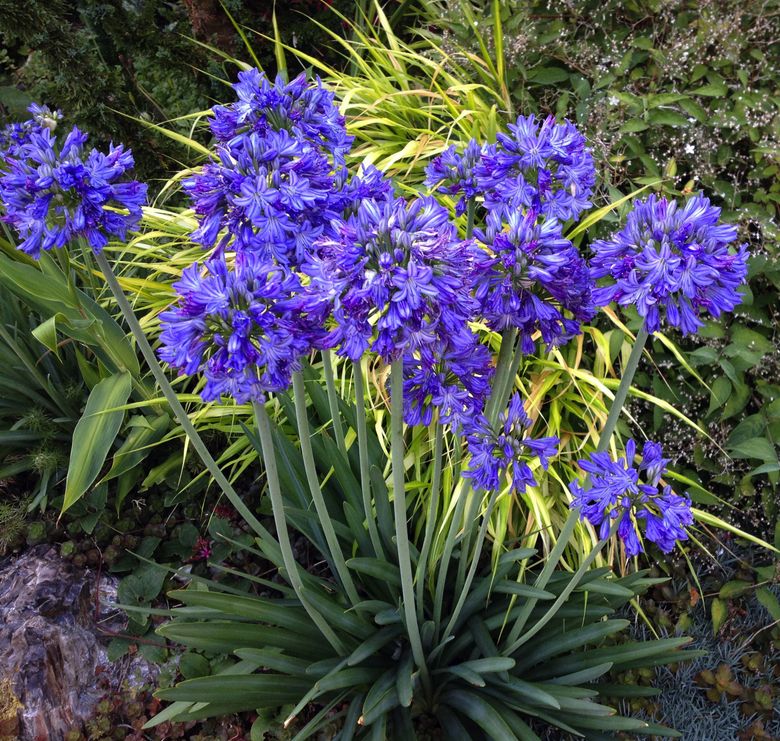Spectacular Agapanthus: Enhancing Your Yard's Appeal
Spectacular Agapanthus: Enhancing Your Yard's Appeal
Blog Article
Unleashing the Secret to Successful Agapanthus Growing: Idea for a Flourishing Garden
In the realm of horticulture, cultivating agapanthus successfully requires a calculated strategy that includes different aspects of plant treatment. With mindful focus to information, one can unlock the keys to nurturing these sensational blossoms, bring about a garden that grows with charm and vibrancy. By recognizing the nuances of agapanthus growing, one can produce a setting where these plants flourish and flower abundantly. In the complying with conversation, we will certainly discover important ideas and tricks that will certainly direct you towards a flourishing agapanthus garden, supplying understandings right into best practices, dirt problems, sprinkling techniques, and extra.
Planting Agapanthus: Finest Practices
When planting Agapanthus, correct dirt prep work is crucial for ensuring successful development and development of these attractive flowers. Agapanthus, generally known as Lily of the Nile or African lily, flourishes in well-draining dirt with a slightly acidic to neutral pH degree - Agapanthus. Prior to growing, it is crucial to amend heavy clay dirts with organic matter such as garden compost or peat moss to boost drainage and supply vital nutrients for the plants
To grow Agapanthus, select an area that obtains full sunlight to partial color, as this will promote healthy and balanced development and plentiful blooming. Dig a hole two times the diameter of the plant's root ball and put the Agapanthus at the very same depth it was formerly growing. Gently backfill the opening with soil, pushing down strongly to get rid of any air pockets around the origins.
Water the newly grown Agapanthus thoroughly and remain to keep the dirt evenly damp, specifically throughout the plant's active growing season. Agapanthus. Applying a balanced fertilizer once a month can further support the plant's growth and blooming. By following these best practices for planting Agapanthus, you can develop a magnificent screen of these fascinating blossoms in your yard
Suitable Soil Issues for Agapanthus
For optimal growth and blooming success of Agapanthus plants, making certain the soil conditions are suitable is vital. Agapanthus flourishes in well-draining soil with a somewhat acidic to neutral pH level varying from 6.0 to 7.0. This type of soil enables sufficient water drainage, stopping waterlogging which can lead to root rot. To enhance dirt drain, consider adding raw material such as compost or peat moss when preparing the growing website. Additionally, Agapanthus chooses soil that is abundant in nutrients, so integrating a balanced fertilizer throughout the expanding period can advertise healthy and balanced growth and lively blooms.

Watering and Feeding Tips
To guarantee healthy and balanced growth and lively blooms, correct watering and feeding techniques are crucial for effective Agapanthus farming. Agapanthus plants take advantage of normal watering, particularly throughout the growing season. It is suggested to water deeply when a week, making sure the soil is wet Check This Out but not waterlogged. Throughout heat or in pots, more regular watering may be essential to protect against the soil from drying out completely.
When it concerns fertilizing Agapanthus, a well balanced plant food with equivalent components nitrogen, phosphorus, and potassium can be applied in the springtime to promote healthy growth and blooming. Slow-release fertilizers are suitable for offering nutrients slowly over an extended period. Stay clear of over-fertilizing, as this can result in extreme vegetation development at the expense of flowers.
Additionally, incorporating raw material like compost into the soil can enhance nutrient degrees and improve soil structure, assisting in the total health of the Agapanthus plants. By adhering to these watering and fertilizing pointers, gardeners can ensure their Agapanthus plants grow and generate stunning screens of blossoms.
Pruning and Deadheading Techniques
Proper trimming and deadheading techniques play an essential role in keeping the health and wellness and appearances of Agapanthus plants, matching the essential methods of watering and feeding for successful cultivation. Trimming Agapanthus involves getting rid of invested Recommended Reading blossom heads, dead or yellowing leaves, and general shaping of the plant to promote much better development. Deadheading, the procedure of eliminating discolored flowers, not just enhances the plant's look however likewise motivates additional flowering.
When deadheading Agapanthus, it is advisable to clip off the flower stem at the base using sharp, tidy shears. This procedure reroutes the plant's energy from seed production back right into origin and foliage development, promoting a healthier and much more robust plant. Regular deadheading can expand the blooming period of Agapanthus and avoid self-seeding, which can result in overcrowding.
In terms of trimming, Agapanthus generally take advantage of a light trim after blossoming to clean the plant and urge fresh growth. Cutting back the spent flower stems and removing any dead or broken vegetation helps maintain the plant's vigor and general look. However, it is necessary to prevent cutting right into the crown of the plant, as this can deteriorate its wellness.

Protecting Agapanthus From Pests and Diseases
Executing efficient pest and condition monitoring approaches is crucial to protecting the health and wellness and vitality of Agapanthus plants in growing. One usual pest that impacts Agapanthus is the Agapanthus borer, a caterpillar that tunnels into the plant, creating damage to the fallen leaves and blossoms.
In addition to parasites, Agapanthus are susceptible to illness such as root rot and fungal fallen leave areas. By remaining vigilant and attending to parasite and condition concerns immediately, gardeners can aid their Agapanthus prosper and flourish.

Conclusion
In verdict, successful growing of agapanthus requires appropriate planting techniques, ideal soil problems, adequate watering and fertilizing, regular pruning and deadheading, and protection from diseases and insects. By complying with these tips and methods, gardeners can make sure a growing garden loaded with attractive agapanthus blossoms. Agapanthus. Remember to keep constant treatment and interest to detail to promote the wellness and long life of these stunning plants
When planting Agapanthus, appropriate dirt preparation is essential for making sure effective growth and growth of these gorgeous blossoms.Water the freshly grown Agapanthus completely and continue to keep the soil uniformly damp, particularly throughout the plant's energetic growing season.For ideal growth and growing success of Agapanthus plants, making sure the soil conditions are suitable is crucial. When hair my explanation transplanting or growing Agapanthus, make sure the dirt is well-prepared to provide the required structure for the plants to establish themselves efficiently. One typical insect that impacts Agapanthus is the Agapanthus borer, a caterpillar that passages right into the plant, creating damage to the flowers and fallen leaves.
Report this page